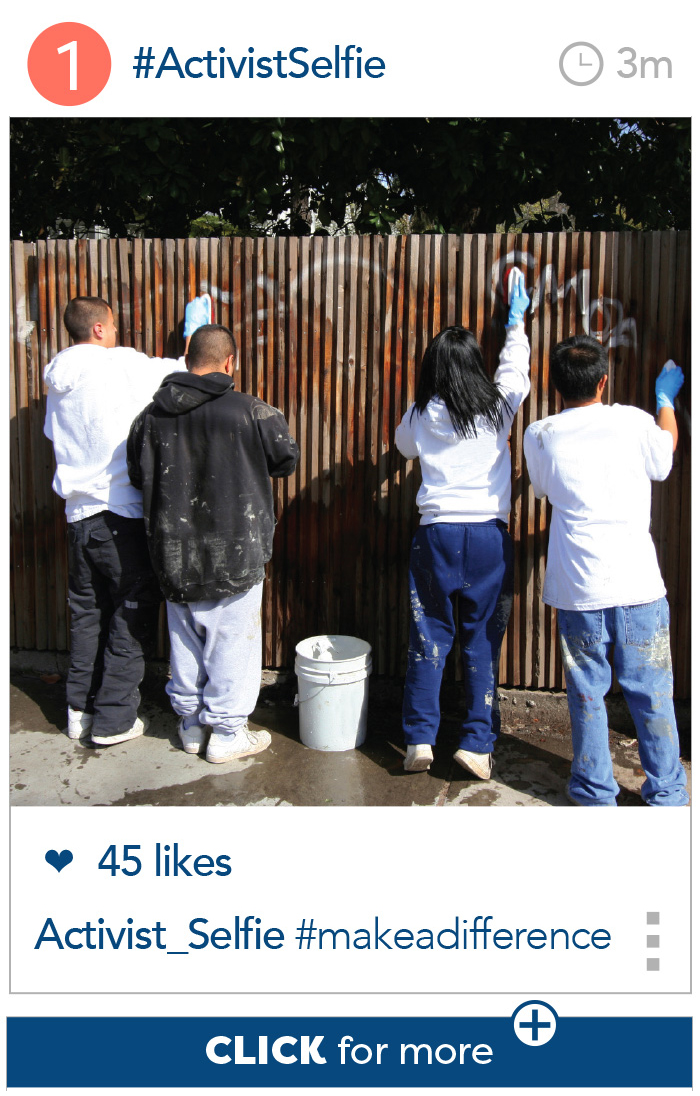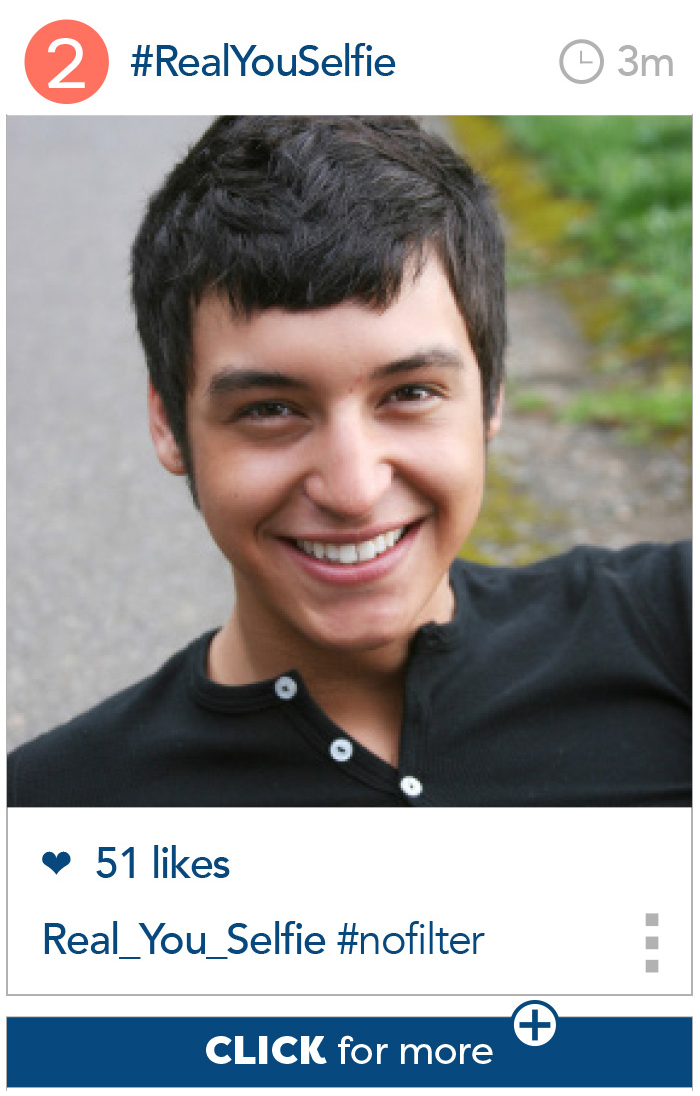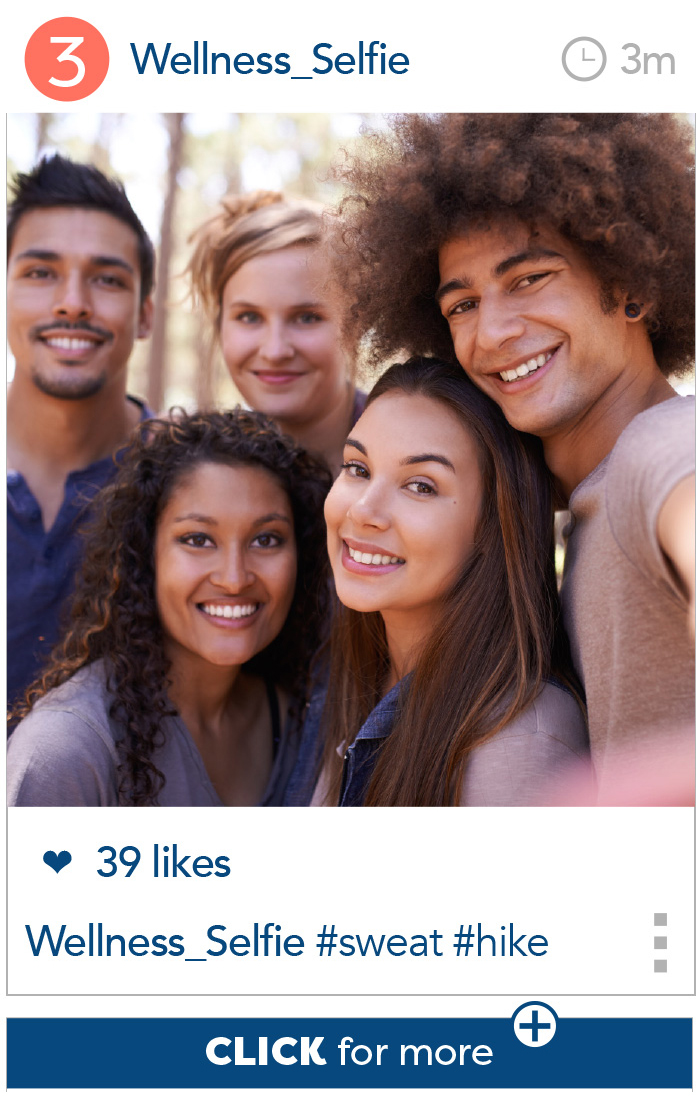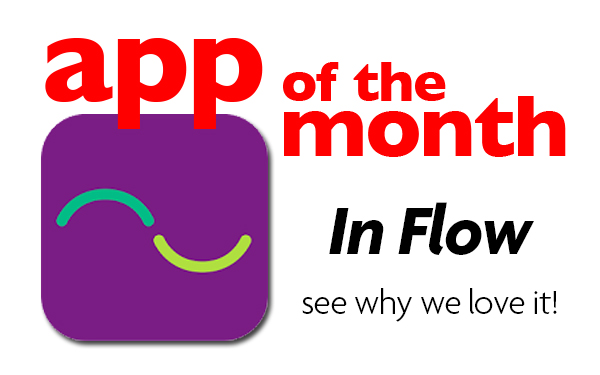Reading Time: < 1 minuteRate this article and enter to win
What if a potential employer, academic supervisor, or date searches for you online (as they certainly will), and finds—right there!—your elegant design portfolio or insightful blog posts, and the Twitter, Instagram, or YouTube account that demos your passion and thoroughly engaging personality? Establishing a positive online presence (a “personal brand”) can make the difference in whether or not you get seriously considered for an internship or job.
The internet offers a range of ways to help you capitalize on, showcase, and develop your skills and potential. When you are actively present online, sharing ideas, making connections, and discovering new opportunities and resources, those possibilities magnify. “Start with your LinkedIn profile and make sure it is tightly composed, easy to read, and to the point,” says Jeff Onore, a career coach based in Boston, Massachusetts. “If you are in a creative profession (or want to join one), then putting your work online is necessary. But don’t overdo it. Create additional online outlets only if you are committed to continually tweeting, posting, revising, and being attentive to your ‘brand.’”
1. What’s this for?
Here’s what a positive online presence can help you do:
- Present your knowledge, skills, or passions to anyone who might evaluate you in a professional capacity
- Add detail and color to what’s on your résumé
- Customize various profiles or social media accounts for particular audiences or goals
- Give potential employers something good to find
- Network and connect with others in your (future) field
- Expand your exposure to work and news in your (future) field
- Advocate for a cause or showcase your values
- Personalize yourself in relatable ways
- Demonstrate your commitment to your goals
- Separate your public and personal online presence
Students speak to their goals
In a recent survey by Student Health 101, 82 percent of students who responded said that a proactive online presence could definitely or potentially be valuable to them. More than 3 in 10 said they were already working on this to some degree.
Present your knowledge, skills, or passions to employers or anyone else who may evaluate you in an academic or professional capacity
“In the architecture profession it is important for potential employers to see the graphic work we do, not just a résumé. Many students post portfolios online so they can be viewed prior to an interview or perhaps spark a connection. This is not dissimilar to firms posting their work online for potential clients and employees to see.” —First-year graduate student, Wentworth Institute of Technology, Massachusetts
Add detail to the basic info on your résumé and LinkedIn profile
“I am passionate about instructional technology. I have been working in higher ed for almost 10 years now and am looking to continue advancing my career. One way is to brand myself as an expert in the technologies used in higher ed.” —Third-year graduate student, The University of Memphis, Tennessee
Customize your various profiles for particular employers or audiences
“I have a LinkedIn account that I use, but it is too diverse; I need to specify different accounts for my different interests/personas. I have a Twitter account that I set up for where I want to be professionally, but content is all over the place. I need to get focused and separate past, current, and future me.” —Third-year online graduate student, University of the Pacific, California
Give potential employers something to find
“I would create professional Facebook/Twitter accounts. I have very private, personal ones, so I am worried an employer may not hire me because they don’t see my presence online.” —Second-year graduate student, University of Wyoming
Be in control of what comes up first
“I have gone about this by putting content out there that I am proud of; for instance, writing for the school magazine about topics I know or care about. Whenever my department wants to feature students on its website, I also jump at the opportunity. Now when I search my name, the articles I have written, and what has been written about me, are some of the first things that come up.” —First-year graduate student, Rochester Institute of Technology, New York
Network and connect with others in your (future) field
“I would create a personal blog/website to display my graphic design portfolio work and publish a little about myself. I would also start to actively engage with graphic designers who have blogs and integrate myself into communities of graphic designers.” —Second-year undergraduate, Drake University, Iowa
Expand your exposure to key themes and news in your (future) field
“As an English education major, it’s important that I’m immersing myself in the content that I wish to teach. I currently try to operate a young-adult novel review site where I keep up with the latest trends in YA literature. That way I can speak about it in any conversation, be it an interview or just a discussion with students.” —Fourth-year undergraduate, The College of New Jersey
Advocate for a cause or showcase your values
“If I was looking to brand myself, it would most likely be toward what I’m most passionate about: raising money for cancer [through race events]. I’m creating my own website, and my ‘brand name’ is Tri-ing for A Cure. Every year I increase my fundraising goal. I would love to get my name out there and raise as much money as possible.” —First-year undergraduate, University of Maine
Personalize yourself in relatable ways
“I made myself appear family-oriented, [saying I] like to volunteer and am a trend starter. Posting pictures of my family and the things that I’m proud of is a boost to my reputation.” —Second-year undergraduate, University of Delaware
Demonstrate your commitment to your goals
“I have been working on a blog for the past four years. It’s simply a storyline of my goals [with the message that] no matter what happens, you can’t give up. I’m a runner, and after four years of trying I finally was able to qualify and will be running the 2016 Boston Marathon!” —Third-year undergraduate, Averett University, Virginia
Separate your public and personal online presence
“I would use one email address for professional branding endeavors and try to maintain a separate personal online persona.” —Second-year online graduate student, University of Maryland
2. What kind of content?
What you post depends on your goals, your choice of online forum, how much time you have available, and other factors. Consider these steps:
- Figure out who your target audience is
- Create content that interests your audience
- Share relevant content from other reliable sources
- Speak to your audience in an appropriate voice
- Incorporate visuals
- Use keywords strategically so that you and your work are easily found
- Consider creating different outlets for different purposes
- Think about quality control
- Minimize digressions from your theme
- Be aware of your mood and motivation
How to figure out your content policy
Successful blogs and social media feeds are based around a particular theme. They usually include visual images: People are more likely to look at photos and graphics than they are to read words. Your theme could be:
- Stylistic; e.g., showcasing your humor or design skills
- Issue-based—presenting your take on a professional, social, academic, or political topic, e.g., advocating for local food sources or disability access
- Interest-based; e.g., speaking to your talent or experience in computer coding or sports commentary
Some content elements are obvious. On LinkedIn, you would summarize your career goals and relevant achievements, with the option of posting your résumé and samples of your work. On a blog or personal website, you’d include a brief bio; present visual work or post updates; and link to relevant publications or your social media accounts.
“In the past, a college student would send résumés through the mail (what??) or email specific employers. Now, with the advent of LinkedIn and other public postings, your résumé is available 24/7 to everyone. The relative anonymity of a mailed résumé is a different concept from how much more fully you may present online. Be cautious.” —Jeff Onore, career coach, Boston, Massachusetts
These steps will help you figure out what to post
Think about who your audience is
“I would first try to step into the shoes of the people I’d want to ‘sell’ myself to.” —Third-year undergraduate, University of New Hampshire
Create content that interests your audience
“Think about what you are saying before you say it, always with an eye on serving an audience. Quality content really just means giving the audience something that they can get invested in, too.” —Ann Handley, chief content officer at MarketingProfs, Massachusetts
Share relevant content from other sources
“Look for interesting posts about your topic and share them. It’s a good idea to link to quality content and share things that are more ‘on topic’ for your audience. Use hashtags around that topic and grow a following that is interested in that topic.” —Andrea Vahl, social media consultant, author, and blogger
Speak to your audience in a voice they recognize
“I am in the process of making a webcomic and website for myself. I make everything themed and worded in a certain way to attract the audience I want to be interested in my story.” —First-year student, Collin College, Texas
Incorporate visuals
“I try to post a lot of pictures of my animal connections and involvements with rescuing and rehabilitating animals.” —Third-year undergraduate, Missouri University of Science and Technology
Use keywords strategically
“I would make sure that keywords that are on my website show up on my professional pages (LinkedIn, ResearchGate, etc.), and I would update my blog to reflect these interests.” —Third-year graduate student, University of Miami College of Arts & Sciences
Consider different outlets for different purposes
“I am building my brand as a traveler as well as a humorous person. While I’m here interning for a development organization, I post blogs about the business and agricultural environment in Mozambique. When I return to the States, I plan to create a blog that is more social and pertaining to music and working-class culture. I also plan to build on my blog posts for my internship by creating a more politically and economically conscious blog.” —Third-year graduate student, American University School of International Service, Washington DC
Think about quality control
“High-quality pictures (no selfies!). Nothing negative about anything or anyone.” —Fourth-year undergraduate, University of California, Merced
Minimize digressions from your theme
“Avoid sharing your every move, meal, or thought. When you post too much, you can overwhelm your audience and get unfollowed.” —Andrea Vahl, social media consultant, author, and blogger
Be aware of your mood and motivation
Read everything twice and edit it before you post; avoid writing in haste or anger; and be cautious and respectful about how you respond to other people’s posts. —Jim Joseph, marketing instructor at New York University (in Entrepreneur)
3. Which platforms?
Where to start? These questions will help you find your niche:
- Where does your intended audience hang out?
- Does your (future) career rely on a particular online skill or forum?
- Are you aiming for a diverse audience?
- Will your content involve visuals?
- Will your content be time sensitive?
- Will you have limited time for posting?
- Do you want to integrate and connect your online networks and accounts?
How to choose your online forums
Successful blogs and social media accounts are dynamic and up-to-date. They involve a significant time commitment. If your goal is to display your visual work, a gorgeous website would be ideal, but an Instagram gallery may be more realistic and looks good, too.
Ask yourself these questions:
Where does your intended audience hang out online?
“[I would] become active in whatever source I want to be involved with. Find discussion boards, network with other users, and make impactful statements.” —Third-year undergraduate, University of Wisconsin–Platteville
Will your content involve visuals?
“I created a LinkedIn profile, but I would certainly love a platform to portray my work and my experience in a more visual format.” —First-year graduate student, Florida International University
Does your future career rely on a particular online forum?
“Schools are looking for teachers who know how to use Twitter and when I start looking for jobs as a teacher, I want schools to know that I am technologically proficient.” —Fourth-year undergraduate, Old Dominion University, Virginia
Are you aiming for a diverse audience?
“I would make an Instagram for my artwork, as well as a website or a Tumblr blog. Getting the work out on many platforms so that people will see it and want to share it is the key.” —Second-year graduate student, Kutztown University, Pennsylvania
Will your content be time sensitive?
“Using Twitter is huge. It helps you advocate for anything that you are passionate about and allows immediate interaction.” —Third-year undergraduate, University of Alaska Anchorage
Will you have limited time for posting?
“I would lean toward trying to use easy advertising methods, such as hashtags on Instagram, where it is very simple for anyone to access what I am trying to put forward.” —Third-year undergraduate, New Jersey Institute of Technology
Do you want to integrate and connect your online networks?
“Ideally the different mediums would support each other; blogs, tweets, etc. would be consistent.” —Second-year online graduate student, University of Maryland
4. What’s public vs. private?
Which of your online outlets will be for public or professional purposes, and which are for your personal use? Could your existing profiles be re-oriented toward professional goals, or do you need to open new accounts?
- Identify your professional/personal boundaries and appropriate privacy settings
- Make sure you are easily found by those you want to find you
- Give yourself an option for staying anonymous
- Consider the professional relevance of your online identity
- Check your existing accounts and privacy settings, including tag approval
- Be conservative about what you allow or post
How to think about boundaries
Think about your public/private boundary
“I value the separation of work and private life. I won’t even be Facebook friends with coworkers unless I become good friends with them.” —Fifth-year undergraduate, Boise State University, Idaho
Make sure you are easily found by those you want to find you
“Keep the same name, profile pic, imagery, and look across your social media profiles,” writes Kevan Lee, a professional content tracker at Buffer, an app that lets you plan and strategize your social media posts, in a blog post. This makes you more recognizable to your followers and helps you stand out.
“Consistency is key. [I make] sure all my social media accounts contain the same name so it’s easy to find me on all of them.” —Fourth-year undergraduate, Grand View University, Iowa
If necessary, give yourself an option for staying anonymous
If you want to post snarky updates or controversial comments that might give pause to future employers, keep an anonymous account. No one need know that @PrattlingParrot is you.
“[For professional purposes] I would create a second Twitter with my real name as the username and keep my original account fun.” —Second-year undergraduate, Drake University, Iowa
Consider the professional relevance of your online identity
“I’m going to be a teacher, so if I were to create new accounts (on Twitter or something) I’d make my username ‘Ms. Something’ instead of my first name or a pet’s name or whatever. Also, I only post positive things about my job and my classes in case future employers could see that.” —Fourth-year undergraduate, University of North Dakota
Check your existing accounts and privacy settings
“I think the first step would be to clean up your online profiles. No matter how conscious someone can be, you never know if something you posted may have offended someone. Going back and double-checking is a great start.” —Fourth-year graduate student, East Tennessee State University
In a recent survey by SH101, 72 percent of respondents said they had searched for themselves online with the specific goal of seeing what’s public and heading off potential problems (another 16 percent had not, but planned to). And about 90 percent said they are conscientious about whether or not their content is appropriate, at least some of the time.
5. Are you networking?
This is at least partly about networking, so:
- Go public with your goals and achievements
- Identify potential contacts
- Aim to learn from them too
- Build a relationship with your audience
- Interact with your contacts
How to make helpful connections
Go public with your goals and achievements
“I have tried to network with as many people as possible so that they know what I am doing and [can] help me spread the news. Networking is extremely important.” —First-year undergraduate, Florida International University
Identify potential contacts
“I would line my posts up with my career goals. I’d like to work with the mining industry, so I have started to follow mining companies on social media, making sure my work experience is known in my profile.” —Third-year undergraduate, Montana Tech of the University of Montana
“I signed up with and followed a lot of authors and publishers on Twitter to help build my platform as a writer.” —Recent graduate, University of Central Arkansas
Aim to learn from them too
“I have started a blog but would like to further my knowledge [of the field] to build more of a stage for myself.” —Second-year undergraduate, Utah State University
Build a relationship with your audience
“I do believe that blogging or vlogging could be of interest to me. The most important thing would be to slowly create an association with readers/viewers. If you simply do it for yourself, you might as well keep a journal.” —Third-year undergraduate, Metropolitan State University of Denver
Interact with your contacts
“Something that very much benefited me was recognizing that ‘connecting’ online isn’t necessarily networking. I have random additions on LinkedIn who have not said a word to me in two years. Now I make sure I’m interacting. Have a reason for connecting and following up. Share information and identify where you can physically meet and talk. That’s the difference between ‘networking’ and just ‘connecting.’” —Fourth-year undergraduate, University of Lethbridge, Alberta
6. Are you being true to yourself?
Projecting positively online is not about faking it.
- Be thoughtful about your photo and profile
- Be the person you’d want to work with
- Consider ways that your quirky perspective can work online
- Consider building on your existing online foundation
- Keep it real while staying on-message and mature
Keeping it real
Positivity is powerful—not just IRL but in how we reflect those real-life experiences online. “Stay away from negativity,” says Vahl. Tweet others as you would want to be tweeted. A 2011 study analyzed more than 46,000 tweets and found that positive messages were more likely to be retweeted (System Sciences).
Be thoughtful about your photo and profile
“[Use] the same profile picture, one that reflects your personality/you, [and] conscious and reflective profile descriptions.” —Second-year graduate student, Clemson University, South Carolina
Be the person you’d want to work with
“[I would project] a positive and career-focused image. Nothing posted that will harm my possibilities with future employers.” —Fourth-year undergraduate, Grand View University, Iowa
Consider ways that your quirky perspective can work online
“[I would] make it based on something unique about me, that other people could relate to. For example, I follow Diary of a Tall Girl on Twitter because her posts are super-relatable.” —Second-year undergraduate, Michigan Technological University
Consider building on your existing online foundation
“I think for those who have Facebook or Instagram, we’ve all pretty much already branded ourselves in some way—e.g., the foodie, the adventurer/explorer, the hipster, the politician.” —First-year graduate student, University of California, San Francisco
Keep it real while staying on-message and mature
“To brand myself would imply that I feel there is something about myself I am fearful [that others will know]. I feel wholehearted honesty works well when talking to other people.” —Fourth-year undergraduate, Tulane University, Louisiana
7. Who can you learn from?
Take note of blogs, sites, and social media accounts that impress you, and why. Think about how you can learn from them:
- Check out what’s working for others
- Talk to people who present positively online
- Find out what professionals notice
How to pick it up from others
Check out what’s working for others
“Continuously finding people who have similar, bigger goals and taking notes on what they do best, where they had difficulties; applying that knowledge to my own social media posts; connecting with people who have different interests/views, but similar core values to my own.”
—Second-year undergraduate, Michigan Technological University
Talk to people who present positively online
“I would definitely consult with people who have created successful personas online.”
—Fifth-year undergraduate, San Diego State University, California
Find out what professionals notice
“I would potentially consult with professionals in the field to help me get the most out of it.”
—Second-year graduate student, University of Wisconsin–Madison
Time is of the essence
To maximize the action on your social media accounts, post at certain times of day. Web marketing guru Neil Patel recommends this schedule (in Quicksprout):
Facebook
Twitter
 |
5 p.m. – The most retweets |
 |
12 p.m. & 6 p.m. – The highest click-through rates |
Instagram
 |
3 – 4 p.m. – The most likes |
Pinterest
 |
8 – 11 p.m. – The best visibility |
Students: Inspiring blogs, video channels, and feeds
Twitter
Misty Copeland
Misty Copeland was the first-ever African-American to be promoted to principal dancer in the American Ballet Theatre. Follow her on Twitter to learn more about her story, see what she does for others, and marvel at how she remains positive through tough times. + Visit Misty’s Twitter
Johanna Basford
Johanna Basford has played a huge role in the adult coloring books movement. She hand-draws all of the pages in her books, giving them a more authentic and original feel. Check out her down-to-earth Twitter feed for a peek into her world of drawing, to get some professional coloring tips, and to find out how her drawings have inspired others to become more creative and mindful. + Visit Johanna’s Twitter
Jeremy Lin
Jeremy Lin is one of the few Asian-Americans who have played basketball in the NBA. His Twitter feed is filled with positive messages, including proud posts about his heritage and photos showing how he gives back to his fans.
+ Visit Jeremy’s Twitter
Instagram
Dylan Millsap @dylanthenomad
This student, a talented photographer, goes around the world with his camera in hand. He’s studying screenwriting at the Academy of Art University in California.
Kara Benz @boho.berry
For how to live a more centered life, check out these tips on journaling, creating goals, and getting organized.
YouTube
John and Hank Green
You may know John Green as the author of The Fault in Our Stars (Penguin, 2012). He and his brother, Hank, are together known on YouTube as the VlogBrothers, and incited a band of followers who call themselves the Nerdflighters. Check out their channel to see the insightful videos that have become so popular. + Check out John and Hank on YouTube
Seán William McLoughlin or “Jacksepticeye”
For cheerful, engaging video commentary, come here. “Jacksepticeye on YouTube is my inspiration. He has a way of making [his audience] feel engaged and wanted even though truly we’ve never met each other,” says a second-year undergraduate at the University of Maryland Eastern Shore. + Check out Jacksepticeye on YouTube
Estée Lalonde
This lifestyle and beauty video blogger from Canada is currently living in London. “Estée is my all-time favorite YouTuber! She is serious inspiration and her personality shines through her content,” says a second-year undergraduate at Metropolitan State University in Minnesota. + Check out Estée on YouTube
Get help or find out more
[survey_plugin]
Article sources
Ann Handley, chief content officer at MarketingProfs, Boston, Massachusetts.
Jeff Onore, career coach, Boston, Massachusetts.
Andrea Vahl, social media consultant and co-author of Facebook Marketing All-in-One for Dummies, Louisville, Colorado.
Blickley, L. (2015, April 2). How celebrities are using social media in a more positive and passionate way. Huffington Post. Retrieved from https://www.huffingtonpost.com/2015/04/02/celebrities-social-media-for-good_n_6979790.html
Coviello, L., Sohn, Y., Kramer, A. D. I., Marlow, C., et al. (2014). Detecting emotional contagion in massive social media networks. PLoS ONE, 9(3), e90315. Retrieved from https://journals.plos.org/plosone/article?id=10.1371/journal.pone.0090315
DeMers, J. (2014, October 20). Quality over quantity: The overblown importance of likes and followers. Forbes. Retrieved from https://www.forbes.com/sites/jaysondemers/2014/10/20/quality-over-quantity-the-overblown-importance-of-likes-and-followers/
Donnelly, L. (2012, July 8). Facebook and Twitter feed anxiety, study finds. Telegraph. Retrieved from https://www.telegraph.co.uk/technology/9383609/Facebook-and-Twitter-feed-anxiety-study-finds.html
Gruzd, A., Doiron, S., & Mai, P. (2011, January). Is happiness contagious online? A case of Twitter and the 2010 Winter Olympics. In System Sciences (HICSS), 2011 44th Hawaii International Conference on System Sciences–2011, (pp. 1–9). IEEE.
Jordan, A. H., Monin, B., Dweck, C. S., Lovett, B. J., et al. (2011). Misery has more company than people think: Underestimating the prevalence of others’ negative emotions. Personality and Social Psychology Bulletin, 37(1), 120–135.
Joseph, J. (2014, June 25). Build your personal brand on social media, moment by moment. Entrepreneur. Retrieved from https://www.entrepreneur.com/article/235073
Lee, K. (2015, January 15). The 5 keys to building a social media strategy for your personal brand [Blog post]. Retrieved from https://blog.bufferapp.com/social-media-strategy-personal-branding-tips
Lenhart, A. (2015, April 9). Teens, social media and technology overview 2015. Pew. Retrieved from https://www.pewinternet.org/2015/04/09/teens-social-media-technology-2015/
Kross, E., Verduyn, P., Demiralp, E., Park, J., et al. (2013). Facebook use predicts declines in subjective well-being in young adults. PLoS ONE, 8(8), e69841.
My Security Sign. #TakeNoBullies: Making digital responsibility stick. Retrieved from https://www.mysecuritysign.com/take-no-bullies
Patel, N. (2015, January 2). What are the best times to post onto social media? [Blog post]. Retrieved from https://www.quicksprout.com/2015/01/02/what-are-the-best-times-to-post-on-social-media/
Rosen, L. (2011, August 6). Social networking’s good and bad impact on kids. Retrieved from https://www.apa.org/news/press/releases/2011/08/social-kids.aspx
Sandrine, S. (2015, August 20). Complete guide to YouTube optimization: Everything you need to know to improve your channel. Buffersocial. Retrieved from https://blog.bufferapp.com/youtube-optimization
Student Health 101 survey, February 2016

















 “I monitor the page though my manager app that I’ve installed on my phone. I posted guidelines and must approve all comments and posts before they’re allowed to be posted. If someone complains about harassment or being messaged, I’ll check out the situation, take proper steps to stop it, and prevent it in the future.”
“I monitor the page though my manager app that I’ve installed on my phone. I posted guidelines and must approve all comments and posts before they’re allowed to be posted. If someone complains about harassment or being messaged, I’ll check out the situation, take proper steps to stop it, and prevent it in the future.”





















